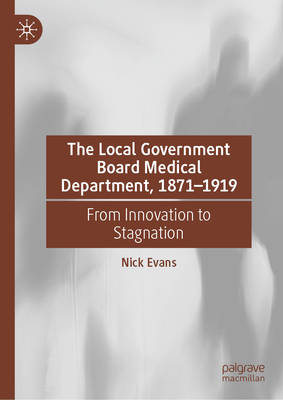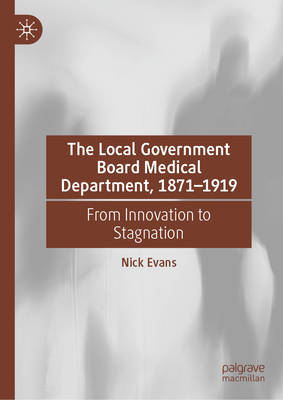
- Afhalen na 1 uur in een winkel met voorraad
- Gratis thuislevering in België vanaf € 30
- Ruim aanbod met 7 miljoen producten
- Afhalen na 1 uur in een winkel met voorraad
- Gratis thuislevering in België vanaf € 30
- Ruim aanbod met 7 miljoen producten
Zoeken
The Local Government Board Medical Department, 1871-1919
From Innovation to Stagnation
Nick Evans
Hardcover | Engels
€ 244,45
+ 488 punten
Omschrijving
This book explores the Local Government Board (LGB) Medical Department's work, successes, and failures throughout its forty-eight-year life and assesses its influence on public health administration in England and Wales. Earlier generations of public health historians have substantially dismissed the Department as being too small to be effective and too lacking in authority to have an impact. More recently a growing number of scholars have challenged this view. This book continues this reappraisal, identifying the influence of the Department on Victorian and Edwardian epidemiology and public health management and its success in protecting Britain from epidemic and endemic infectious disease in a pre-antibiotic era. The Medical Department's small team of doctors provided expertise, encouragement, leadership, and challenge in the management of public health and the struggle against infectious disease in Britain and beyond. Blending a chronological approach with a thematic focus in each chapter to chart the evolution of the LGB Medical Department, the author uses case studies of selected medical inspections to explore the Department's work at various stages in its life. Analysing both national and local archive materials to explore the Medical Department's work and influence in its contemporary contexts, this book offers fresh insights into the relationships between central and local government as well as revealing the significant impact of its expert staff on the development of public health administration in England and Wales.
Specificaties
Betrokkenen
- Auteur(s):
- Uitgeverij:
Inhoud
- Aantal bladzijden:
- 296
- Taal:
- Engels
Eigenschappen
- Productcode (EAN):
- 9783032063793
- Verschijningsdatum:
- 22/12/2025
- Uitvoering:
- Hardcover
- Formaat:
- Genaaid
- Afmetingen:
- 148 mm x 210 mm

Alleen bij Standaard Boekhandel
+ 488 punten op je klantenkaart van Standaard Boekhandel
Beoordelingen
We publiceren alleen reviews die voldoen aan de voorwaarden voor reviews. Bekijk onze voorwaarden voor reviews.








